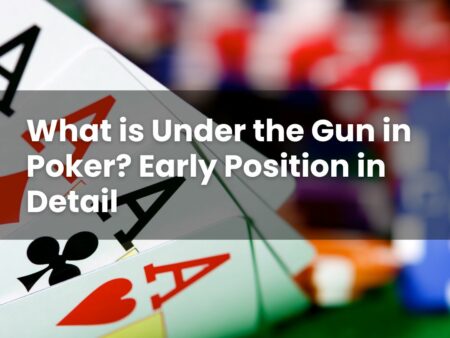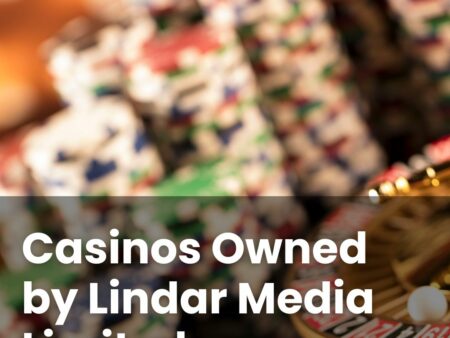If you’ve come across 3 Card Brag or 3 Card Poker, you might be wondering whether they’re just different names for the same game or if there’s more to it. Both are popular in the UK and, while each uses three cards, they play very differently.
Whether you’re at a casino, playing online, or simply curious, knowing the basics might help everything click into place. Understanding the differences could also potentially make it easier to pick the game that suits how you like to play.
Let’s take a closer look at each game, clear up any confusion, and explain what sets them apart.
What Is 3 Card Brag and How Does It Work?
3 Card Brag is a classic British card game played with a standard 52-card deck. It typically suits three to six players (though it also works with two). Each player is dealt three cards face down, and the goal is to hold the best three-card hand at the table.
The hand rankings in Brag, from highest to lowest, are:
- Prial (three of a kind), with three threes the highest
- Running flush (three consecutive cards of the same suit)
- Run (three consecutive cards of any suits)
- Flush (any three cards of the same suit)
- Pair
- High card
Brag revolves around betting between players. There is an agreed stake or ante, then action moves around the table as players decide whether to stay in or fold.
In some versions, players may choose to play blind (without looking at their cards), with adjusted stakes to balance the advantage. The pace and feel centre on reading the table, judging what others might hold, and deciding when to commit.
If you decide to try your hand at any sort of gambling activity, remember to do so responsibly and within your means; never wager more than you can afford to lose.
How Does 3 Card Poker Compare to 3 Card Brag?
3 Card Poker and 3 Card Brag both use three cards, but who you play against and how you bet differ markedly.
In 3 Card Poker, you play against the dealer, not other players. You place an ante and receive three face-down cards. You may fold or make a matching Play bet to continue. Many tables offer an optional Pair Plus bet that pays on your hand alone, regardless of the dealer’s result.
A key rule is dealer qualification: the dealer typically needs queen-high or better. If the dealer does not qualify, the ante usually pays even money and the Play bet pushes. Exact payouts are shown on the table or game screen.
3 Card Brag is player versus player. Your aim is to outplay the other people at your table, not beat a house hand. Because the pot comes from player contributions, the pressure points differ, and decisions rely more on table sense and betting dynamics than on fixed paytables.
Hand rankings also differ. In Brag, a prial beats a run; in 3 Card Poker, a straight flush is best, followed by three of a kind, then a straight. It might be wise to check the posted rules where you play, as they take precedence.
Key Rule Differences Between 3 Card Brag and 3 Card Poker
Card Rankings and Hand Values
In 3 Card Brag, the order runs from strongest to weakest as: prial, running flush, run, flush, pair, high card. The standout twist is that three of a kind tops a straight.
3 Card Poker orders hands differently: straight flush, three of a kind, straight, flush, pair, high card. If you’re switching between the games, this single change can alter how certain hands feel at the table, so a quick look at the rank list before you start might be a good idea.
Betting Structure and Game Flow
Betting is where the two games really part company. In 3 Card Brag, players contribute to a common pot, then choose whether to stay in, fold, or sometimes play blind. Raising can be allowed depending on the version, and the pot grows as players commit.
In 3 Card Poker, you are not building a pot with others. You place the ante, optionally add Pair Plus, then either fold or place the Play bet to compare against the dealer. There is no escalating series of raises as in Brag. The dealer-qualification rule and any ante bonuses are shown clearly on the table, so you know how results are settled.
Which Game Offers Better Odds and Payouts?
When comparing odds and payouts, it might help to distinguish fixed, table-defined returns from player-funded pots.
In 3 Card Poker, the main Ante and Play bets typically carry a house edge just over 3.3% when using standard strategy. The optional Pair Plus bet has its own paytable and edge, often ranging from about 2.3% to 7.3% depending on the version. Common Pair Plus payouts include around 40 to 1 for a straight flush, 30 to 1 for three of a kind, and 6 to 1 for a straight, though these can vary.
In 3 Card Brag, you compete against other players rather than a dealer, so there isn’t a fixed house edge in the same sense. Outcomes depend on how the hand plays and how the pot grows. The odds of being dealt a prial are about 1 in 425, and because pots are player-funded, payouts fluctuate from round to round. In some hosted games, the venue may take a small fee; where that applies, it will be stated.
If you prefer set payouts and a clear structure, 3 Card Poker lays everything out in advance. If you enjoy a more social, player-led contest where the pot builds at the table, 3 Card Brag fits that mould. Either way, reading the rules where you play and staking within a budget may help to keep the experience straightforward and informed. Always keep responsible gambling practises in mind.








